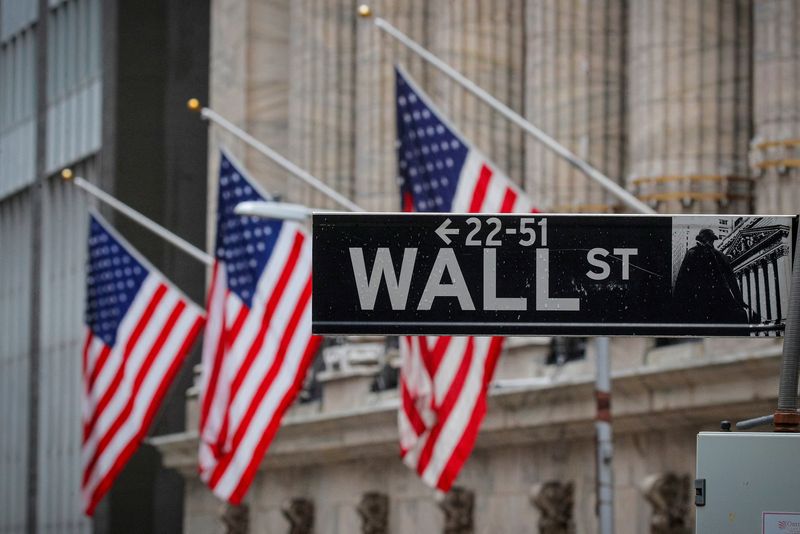2 High-Yield Energy Stocks to Buy Hand Over Fist and 1 to Avoid
For dividend investors, one of the most important things to know about the energy sector is that it is very volatile. That means that dividend-paying energy stocks should go through a little extra scrutiny before being added to your portfolio.
A great example of the problem income investors face when looking for energy investments is Devon Energy (NYSE: DVN). Meanwhile, Chevron (NYSE: CVX) and Enterprise Products Partners (NYSE: EPD) are solid examples of the gems that you can unearth in the energy sector when you dig in just a little bit.
Devon Energy’s dividend history isn’t shocking
Devon Energy is what is known as an upstream company, which means that it produces oil and natural gas. In this case, the company operates exclusively in the onshore U.S. space, but that’s not the most salient factor here.
What is important to understand is that its top and bottom lines are driven almost entirely by energy prices. Oil and natural gas prices are highly volatile, and so Devon’s financial results are also highly variable.
This isn’t a bad thing, per se. It is pretty much par for the course when you are looking at an upstream company. For dividend investors, however, there’s an added wrinkle. Devon’s dividend is variable, with the final payment tied to the company’s financial results.
Even though the dividend yield is listed at 4.4% on major online quote services, investors should expect the actual income received to vary greatly over time. In some ways, the variable dividend policy is a good way to ensure that shareholders are rewarded when energy prices are high, but the downside is that dividend cuts are inevitable.
For most income investors Devon Energy isn’t going to be a good stock to own.
Chevron is a reliable dividend payer
If you are looking for a reliable dividend payer with a long history of annual increases behind it, you’ll probably be better off with Chevron. For starters, it is much more diversified. Its business encompasses the upstream, the midstream (pipelines), and all the way to the downstream (chemicals and refining).
The company’s energy portfolio is also globally diversified. And it happens to be one of the largest energy companies on the planet with a $260 billion market cap. Chevron’s dividend yield is also around 4.4%.
The energy company has increased its dividend annually for 37 consecutive years despite the inherent volatility of the sector. A big part of the story here is its rock-solid balance sheet, with a debt-to-equity ratio of just 0.14 times.
That would be strong for any company, but it gives Chevron the leeway to take on debt during industry downturns so it can support its business and dividend. When energy prices recover, as they always have historically, it pays down the debt in preparation for the next energy sell-off.
If you are looking for an energy producer with a reliable dividend, Chevron is one of the best options you’ll find.
Enterprise is a boring high yielder
If Chevron’s exposure to oil and natural gas production is a bit too troubling for you, there are still some energy options out there. One of the most reliable is Enterprise Products Partners, a master limited partnership (MLP) that operates a large portfolio of midstream infrastructure assets.
Generally speaking, it charges fees for the use of these assets so the price of the oil and natural gas that flows through its system isn’t really that important to its financial results.
This is highlighted by the fact that the company has increased its distribution annually for 26 consecutive years. And there’s more to like here. Specifically, the balance sheet is investment-grade, and cash flow covers the distribution by a strong 1.7 times. There is a lot of room for adversity before a distribution cut would be on the table.
That said, Enterprise’s hefty 7% or so distribution yield is likely to make up the lion’s share of returns over time. This is because there are limited growth prospects in the midstream sector.
But bolt-on acquisitions, expansions of existing assets, small ground-up capital projects, and regular rate increases within its existing portfolio will likely lead to slow and steady growth over time. And that, in turn, should support ongoing distribution growth.
The best options for income in energy
Dividend investors need to understand the impact that the energy sector’s high volatility will have on their investments. Both Chevron and Enterprise have proved they know how to handle the industry’s ups and downs while continuing to reward investors well over time.
That said, Devon Energy isn’t a bad company, but it has chosen a very different dividend approach that inherently means shareholders will see dividend cuts. If you are looking for a reliable income stream in the energy sector, Chevron and Enterprise will be much better choices.
Should you invest $1,000 in Devon Energy right now?
Before you buy stock in Devon Energy, consider this:
The Motley Fool Stock Advisor analyst team just identified what they believe are the 10 best stocks for investors to buy now… and Devon Energy wasn’t one of them. The 10 stocks that made the cut could produce monster returns in the coming years.
Consider when Nvidia made this list on April 15, 2005… if you invested $1,000 at the time of our recommendation, you’d have $758,227!*
Stock Advisor provides investors with an easy-to-follow blueprint for success, including guidance on building a portfolio, regular updates from analysts, and two new stock picks each month. The Stock Advisor service has more than quadrupled the return of S&P 500 since 2002*.
*Stock Advisor returns as of August 22, 2024
Reuben Gregg Brewer has no position in any of the stocks mentioned. The Motley Fool has positions in and recommends Chevron. The Motley Fool recommends Enterprise Products Partners. The Motley Fool has a disclosure policy.
2 High-Yield Energy Stocks to Buy Hand Over Fist and 1 to Avoid was originally published by The Motley Fool
'Super Bowl' Nvidia earnings stand to test searing AI trade
By David Randall
NEW YORK (Reuters) – The rally in U.S. stocks faces an important test next week with earnings from chipmaking giant Nvidia (NVDA), whose blistering run has powered markets throughout 2024.
The S&P 500 has pared a sharp drop it suffered after U.S. economic worries contributed to a sell-off at the beginning of the month and again stands near a fresh all-time high.
Nvidia, whose chips are widely seen as the gold standard in artificial intelligence, has been at the forefront of that rally, jumping by more than 30% since its recent lows. The stock is up some 150% year-to-date, accounting for around a quarter of the S&P 500’s 17% year-to-date gain.
The company’s Aug. 28 earnings report, coupled with guidance on whether it expects corporate investments in AI to continue, could be a key inflection point for market sentiment heading into what is historically a volatile time of the year. The S&P 500 has fallen in September by an average of 0.78% since World War Two, the worst performance of any month, according to CFRA data.
“Nvidia is the zeitgeist stock today,” said Mike Smith, a portfolio manager at Allspring Global Investments, which holds the company’s shares in its portfolios. “You can think of their earnings four times a year as the Super Bowl.”
Some investors are getting ready for fireworks. Traders are pricing in a swing of around 10.3% in Nvidia’s shares the day after the company reports earnings, according to data from options analytic firm ORATS. That’s larger than the expected move ahead of any Nvidia report over the last three years and well above the stock’s average post-earnings move of 8.1% over that same period, ORATS data showed.
The results come at the end of an earnings season during which investors have taken a less forgiving view of big tech companies whose earnings failed to justify rich valuations or prodigious spending on AI. Examples include Microsoft, Tesla and Alphabet, whose shares are all down since their July reports.
Nvidia’s valuations have also climbed, as the stock soared about 750% since the start of 2023, making it the world’s third-most valuable company as of Thursday, while also drawing comparisons to the dotcom bubble of more than two decades ago. The company’s shares trade at about 37 times forward 12-month earnings estimates, compared with a 20-year average of 29 times, according to LSEG Datastream.
Market sentiment could depend as much on Nvidia’s guidance as its results. Evidence that it sees robust demand will be a bullish sign that companies are continuing to invest rather than pull back in anticipation of an economic slowdown, said Matt Stucky, chief portfolio manager, equities, at Northwestern Mutual Wealth Management.
Nvidia’s “connection to the largest companies in the U.S. stock market makes this a must-watch event,” he said. “The biggest piece that investors want to know is whether there is sustainability and what demand will look like in ’25 and ’26,” he said.
The trajectory of monetary policy and the U.S. economy also looms large for investors. In a Friday morning speech in Jackson Hole, Wyoming, Federal Reserve Chair Jerome Powell offered an explicit endorsement of interest rate cuts, saying further cooling in the job market would be unwelcome.
Investors will be watching U.S. labor market data on Sept. 6 for evidence of whether last month’s unexpected downshift in employment carried over to August. Signs that employment is continuing to weaken could bring back the recession fears that rocked markets earlier this month.
A tight presidential race between Vice President Kamala Harris, a Democrat, and Republican former President Donald Trump may also whip up market uncertainty in the weeks ahead.
The August surge in stocks may make it difficult for markets to make much more headway in the near term even if Nvidia’s earnings impress Wall Street, said John Belton, a portfolio manager at Gabelli Funds, which holds shares of the chipmaker.
The S&P 500 trades at 21 times expected earnings, far above its long-term average of 15.7.
“The stock market as a whole is still trading at stretched valuations so the bar remains high,” Belton said.
(Reporting by David Randall; Additional reporting by Lewis Krauskopf and Saqib Iqbal Ahmed; Editing by Ira Iosebashvili and Jonathan Oatis)
Walgreens Is Reportedly Considering a Drastic Move to Improve Its Cash Flow
When a company is in a tough financial situation, all options are on the table. For the sake of keeping its operations afloat and ensuring its long-term safety, a company may drastically cut expenses and even abandon once-promising growth opportunities. Cash comes first.
Walgreens Boots Alliance (NASDAQ: WBA) is a company that may be in urgent need of strengthening its cash position. Its cash flow isn’t great, it’s still paying a dividend, and investors have simply been losing hope in the company as a result of its underwhelming financials. Not only is it considering asset sales, but it’s also contemplating a significant move: dumping its stake in VillageMD.
Walgreens has invested billions into its healthcare strategy
In 2021, Walgreens took a majority stake in primary care operator VillageMD when it made a $5.2 billion investment in the company. The move was a strategic one, which involved plans to launch 1,000 health clinics by 2027. Walgreens was hoping to cash in from its position of being a trusted neighborhood pharmacy for millions of Americans.
By launching health clinics at its existing locations, the idea was to incentivize shoppers to visit pharmacies more often and ultimately spend more, driving higher revenue. A year later, VillageMD announced plans to acquire Summit Health, a medical practice, with Walgreens helping to fund the near-$9 billion purchase, adding another $3.5 billion to its investment in the primary care company.
But the growth strategy hasn’t been smooth. In Walgreens’ most recent quarterly results, which ended in May, it incurred an operating loss of $220 million in its U.S. healthcare segment, which includes VillageMD’s results. It was the only one of Walgreens’ main segments that incurred a loss during the period. And earlier this year, Walgreens wrote down its investment in VillageMD by nearly $6 billion.
Will Walgreens dump its entire stake in VillageMD?
In a recent filing, Walgreens has indicated that it is contemplating the “sale of all or part of the VillageMD businesses, possible restructuring options and other strategic opportunities” as it notes that there are “substantial ongoing and expected future cash requirements.” This comes as VillageMD has defaulted on a $2.25 billion loan facility that Walgreens provided the primary care operator with.
For Walgreens to go through with selling its position in VillageMD would undoubtedly be a significant one as it would signify a big change in its growth strategy. But given the challenges VillageMD is facing and the already significant writedown Walgreens has recognized, it’s debatable just how much a sale might bring in for the business. However, by simply abandoning this cash-intensive strategy, Walgreens could put itself in a better financial position in the long run.
Investors may recall that earlier this year, low-cost operator Walmart announced it would abandon its healthcare strategy after concluding it was too difficult and costly to compete in. If a deep-pocketed company like Walmart struggled to provide low-cost healthcare options, it’s definitely not a good sign for Walgreens.
Investors should hold off on buying Walgreens stock
On the profitability front, Walgreens is still juggling with various business segments, and unfortunately, a lot of balls are still in the air. THere’s no clarity what Walgreens may or may not end up doing. Even if it sells its stake in VillageMD, that won’t necessarily solve all of its problems. Margins remain low, growth is nearly non-existent, and the dividend looks unsustainable.
Walgreens stock is down around 60% this year, but until the business shows a significant improvement in its financials and it has better prospects for profitability and growth, investors are still better off avoiding the healthcare stock as it’s likely far too risky for most portfolios.
Should you invest $1,000 in Walgreens Boots Alliance right now?
Before you buy stock in Walgreens Boots Alliance, consider this:
The Motley Fool Stock Advisor analyst team just identified what they believe are the 10 best stocks for investors to buy now… and Walgreens Boots Alliance wasn’t one of them. The 10 stocks that made the cut could produce monster returns in the coming years.
Consider when Nvidia made this list on April 15, 2005… if you invested $1,000 at the time of our recommendation, you’d have $787,394!*
Stock Advisor provides investors with an easy-to-follow blueprint for success, including guidance on building a portfolio, regular updates from analysts, and two new stock picks each month. The Stock Advisor service has more than quadrupled the return of S&P 500 since 2002*.
*Stock Advisor returns as of August 22, 2024
David Jagielski has no position in any of the stocks mentioned. The Motley Fool has positions in and recommends Walmart. The Motley Fool has a disclosure policy.
Walgreens Is Reportedly Considering a Drastic Move to Improve Its Cash Flow was originally published by The Motley Fool
Why Cameco, Ur-Energy, Uranium Royalty, and Uranium Energy Stocks Are Soaring Today
Uranium stocks are ending the week on a strong note, with shares of Cameco (NYSE: CCJ) stock up 5.8% through 10 a.m. ET and smaller rivals Ur-Energy (NYSEMKT: URG), Uranium Royalty (NASDAQ: UROY), and Uranium Energy (NYSEMKT: UEC) doing even better — up 8.2%, 9.9%, and 12.7%, respectively.
And all four of these nuclear stocks have just one company to thank for their rallies: Kazakhstan’s Kazatomprom.
What Kazatomprom said today
As The Financial Times pointed out this morning, Kazatomprom (literally an abbreviation of “Kazakhstan atomic industry”) is the world’s largest producer of uranium for nuclear power. Problem is, it’s planning to become a smaller producer of uranium as early as next year.
Citing “project delays and sulphuric acid shortages,” Kazatomprom cut its uranium production target for 2025 by 17%, to a range of 25,000 to 26,500 metric tons. With Kazatomprom responsible for roughly 20% of world output, that means that global supplies of uranium — which were already constrained thanks to Russia’s war in Ukraine — will fall by another 3% to 4% next year.
Worse, FT cites a Canaccord Genuity analyst warning that Kazatomprom’s forecast could turn out to be optimistic. Canaccord estimates that Kazatomprom will produce closer to 23,000 tons of uranium next year, constricting global supplies even further.
Further, Canaccord observed that Kazatomprom has very few reserves to blunt the impact of a 2025 production cut. Rising demand for uranium has depleted the company’s reserves of uranium already mined and ready for shipment by 31% so far this year.
Should you buy uranium stocks?
Long story short: Kazatomprom can’t produce enough uranium to meet global nuclear power plant needs, so other uranium producers will need to increase their own production to fill the gap. The good news for investors is that this will mean higher prices for uranium and probably more profits for those who own shares in Cameco, Ur-Energy, Uranium Royalty, and Uranium Energy — at least for a time.
According to Trading Economics data, the spot price on uranium today sits just under $80 per pound, down from roughly $105 per pound in February. That’s already comfortably above the $60-per-pound price that economists peg as necessary to encourage production, which has been trending higher. Higher prices and the prospect of fatter profits are only going to encourage uranium miners to mine more.
What will higher production mean for the companies doing the producing? In the short term, it should mean higher profits as companies sell more uranium at higher prices.
Rising prices have already turned profitable Cameco (last year), Uranium Royalty stock (this year), and Uranium Energy (last year, although it began losing money again this year). Ur-Energy, meanwhile, still hasn’t booked an operating profit since 2018. As prices keep rising, there’s a good chance more of these stocks will become more consistently profitable — at least until rising production creates oversupply and starts driving prices back down again. This is a cyclical industry, after all, and investors can’t enjoy a boom without anticipating a bust lying in wait just around the corner.
So what’s your best bet to play this trend?
I have to think it’s to buy Cameco first of all, while keeping a watchful eye on the others. Of the four uranium stocks discussed here, it’s got the best record of profitability (having earned positive net profits in six of the past 10 years). It’s also the only uranium stock currently generating positive free cash flow.
At a price-to-free-cash-flow ratio of 45, Cameco stock is not cheap. But if you absolutely, positively feel you must invest in the uranium rally today, Cameco still seems the safest way to do that.
Should you invest $1,000 in Cameco right now?
Before you buy stock in Cameco, consider this:
The Motley Fool Stock Advisor analyst team just identified what they believe are the 10 best stocks for investors to buy now… and Cameco wasn’t one of them. The 10 stocks that made the cut could produce monster returns in the coming years.
Consider when Nvidia made this list on April 15, 2005… if you invested $1,000 at the time of our recommendation, you’d have $758,227!*
Stock Advisor provides investors with an easy-to-follow blueprint for success, including guidance on building a portfolio, regular updates from analysts, and two new stock picks each month. The Stock Advisor service has more than quadrupled the return of S&P 500 since 2002*.
*Stock Advisor returns as of August 22, 2024
Rich Smith has no position in any of the stocks mentioned. The Motley Fool recommends Cameco. The Motley Fool has a disclosure policy.
Why Cameco, Ur-Energy, Uranium Royalty, and Uranium Energy Stocks Are Soaring Today was originally published by The Motley Fool
US crackdown on advanced chips gives China an opening on old technology
Since 2022, the US has been hyperfocused on restricting Chinese production of high-end semiconductors. The Commerce Department has imposed stifling export controls and allocated tens of billions of dollars to incentivize advanced chip production in the US.
In response, China has forged its own policy — and it has a heavy focus on less advanced but widely used “legacy” chips. New data shows that Beijing is gaining leverage in that market quickly.
China is now on track to install three times as much chipmaking capacity this year as all other countries plan to do over the next three years combined, according to Silverado Policy Accelerator, a nonprofit think tank. The country is poised to control roughly 40% of overall legacy chip production by 2027, according to a study by the Rhodium Group.
“What China’s doing in that segment of the market is what it has done in many other industries,” Sarah Stewart, CEO of Silverado, told Yahoo Finance. “They are infusing that segment of the market with … below-market loans [and] all sorts of subsidies that are not offered by anybody else. None of that is tethered to any true demand signal.”
China’s efforts have raised fears that the semiconductor industry could be at risk of following in the path of the solar and steel industries, where overcapacity in China contributed to a collapse in global prices.
Price pressures are already building. Silverado’s report shows that Chinese firms offered prices that were 20% to 30% lower than their non-Chinese competitors in 2022 and 2023. Those discounts came despite strong industry pricing, particularly in 2022, when a broad semiconductor shortage led to record sales.
While Chinese-made chips are still largely used to supply the domestic market, steep discounts have helped firms like Semiconductor Manufacturing International Corporation (SMIC), Hua Hong (1347.HK), and Nexchip (688249.SS) wrestle market share away from non-Chinese competitors including GlobalFoundries (GFS) and Samsung, according to consulting firm JW Insights.
China accounted for roughly a third of global legacy chip production last year, nearly double that of 2015, according to the Rhodium Group. It’s is expected to increase that capacity to 39% by 2027.
New vs. old
Although advanced chips represent the most cutting-edge technology, their usage is contingent on a foundation built by older semiconductors.
The Commerce Department defines these legacy chips as semiconductors built on nodes that are 28 nanometers or larger. They are considered foundational because they are critical to nearly every electrical device, from smartphones to household appliances, medical equipment, and military vehicles.
For example, a smartphone uses 160 to 170 chips, but just three of those are considered advanced, according to Silverado’s research. GPS, Wi-Fi, battery life, and camera controls are just a few of the functions dependent on legacy chips.
“There’s virtually no application that requires an advanced chip that can work without a foundational set of chips,” Stewart said. “They go hand in hand.”
Yet Biden officials have focused their efforts on producing advanced chips over legacy ones, largely because China lags far behind in that technology.
The Commerce Department announced a combined $3.4 billion in investments to build on US capacity to produce legacy chips, according to official data. That’s one-third of the incentives that have been allotted for leading-edge semiconductors.
National security is one reason for the emphasis on denying China advanced chips. Commerce Secretary Gina Raimondo has said the administration’s export controls are intended to thwart Chinese advancements in artificial intelligence, military systems, and mass surveillance.
“Supercomputing, AI technology, AI chips in the wrong hands is as deadly as any weapon that we could provide,” Raimondo said at the Reagan National Defense Forum last year.
China ramps up manufacturing
China has sought to build out its domestic semiconductor industry for years, pouring billions of dollars into homegrown players.
The current acceleration can be traced back to 2019, when the Commerce Department placed telecommunications giant Huawei on the entity list, cutting off access to critical suppliers including Google (GOOG), Qualcomm (QCOM), and Broadcom (AVGO) overnight.
The 2022 export controls, which all but banned American companies from supplying advanced chips and cutting-edge chipmaking equipment to China, only supercharged the country’s efforts.
Stewart said China capitalized on Washington’s policy by ramping up production of legacy chips with the intention of expanding the country’s global market share, gaining leverage over the US, and controlling prices.
Central to the effort is China’s National Integrated Circuits Industry Development Investment Fund, which has raised $52 billion to develop semiconductor fabrication and design in 10 years with a focus on older chips, according to a report by Semiconductor Industry Association and BCG. It aims to raise $40 billion more by the end of the decade.
The industry has expanded on the backs of Western companies too. China was the largest global importer of semiconductor manufacturing equipment in 2023, importing $15 billion more than its closest competitor, Taiwan, according to Silverado.
Renewed fears over legacy chips
China’s increased production capacity has raised alarm bells among policymakers and industry leaders.
This month, California lawmakers signed a letter urging the Commerce Department to pause unilateral export controls, saying further controls “could send longstanding US companies into a death spiral.”
Some, including Intel CEO Pat Gelsinger, have warned about the repercussions of broad export controls, saying that too many restrictions risked accelerating China’s timeline for chip production.
“If that line is too restrictive, then China has to build its own chips,” he said, speaking at Computex in Taiwan.
Earlier this year, the Commerce Department launched a review of the country’s supply chains to get a better grasp on how US companies are sourcing foundational chips.
And a few months ago, the Department of Defense imposed its own procurement restrictions on government agencies, banning them from using China-sourced chips starting in 2027. The National Defense Authorization Act also banned transactions with entities that use Chinese chips in critical defense and intelligence system products.
The European Commission has also taken note, surveying companies to better understand how Chinese firms are using older chips to undermine them, according to multiple reports.
According to Reva Goujon, a director at the Rhodium Group, countering China’s semiconductor ambitions will ultimately require additional policy support and cooperation among US allies.
“The US needs to effectively create an ex-China market for chips to guarantee demand among US and trusted partners,” said Goujon. “The sustainability of the AI boom is a major variable, as is the US election. Either a Harris administration carries through that plurilateral momentum or we see further fracturing and leaky controls from a Trump 2.0 polarization of partners.”
Click here for the latest technology news that will impact the stock market
Read the latest financial and business news from Yahoo Finance
Prediction: 2 Stocks That'll Be Worth More Than Apple 10 Years From Now
In the world of finance, 10 years is the blink of an eye. Want proof? Take a close look at the table below:
|
Company |
2014 Market Cap (in billions) |
2024 Market Cap (in billions) |
|---|---|---|
|
IBM |
$182 |
$178 |
|
Nvidia |
$10 |
$2,965 |
In August 2014, IBM‘s market cap was roughly 18 times larger than Nvidia‘s (NASDAQ: NVDA). But oh, how the tables have turned. Today, Nvidia boasts a market cap of about $3 trillion — roughly 17 times larger than IBM.
So, looking ahead to the next 10 years, what are the companies that could surpass Apple‘s enormous market cap? Here are two that could pull it off.
Microsoft
If a company is going to surpass Apple over the next decade, it will need a gigantic market cap. Even assuming Apple’s market cap holds steady, that would mean a company would need to reach a market cap of $3.4 trillion to catch Apple.
That’s a very tall order, and there are only so many companies that could do it. Microsoft (NASDAQ: MSFT) is one of them.
For starters, Microsoft already has a market cap of $3.1 trillion as of this writing. As recently as June, Microsoft did have a market cap larger than Apple. What’s more, Microsoft holds a few competitive advantages that should, over time, help the company’s market cap ease past Apple.
First, Microsoft has a more diversified business. The company has its hands in cloud computing, gaming, advertising, hardware, software, social networking, and artificial intelligence (AI). In short, Microsoft has many pathways to success. Apple, on the other hand, has traditionally benefited from its excellent hardware innovation. And while Apple services and AI could boost the company’s revenue, flagging iPhone sales could present a real challenge to Apple over the next decade.
In my book, that means an advantage for Microsoft.
Nvidia
I have reservations about Nvidia right now. Its sky-high valuation makes it vulnerable to a nasty correction if the company’s sales show any signs of slowing. That said, this article is about what could happen over the next 10 years. And in that case, I think Nvidia is well positioned to surpass Apple.
That’s because Nvidia’s core business — making the graphics processing units (GPUs) that will power cutting-edge AI systems for the next decade — is on a long-term growth trajectory that Apple simply can’t match.
Sales of Apple’s signature product — the iPhone — grew every year between 2007 and 2015, but they’ve been flat since then.
Nvidia, on the other hand, is still growing. Over the last two years, the company has tripled its revenue as GPUs have sold like hotcakes. That growth isn’t likely to slow in the next few years. Most analysts expect Nvidia’s sales to double again to around $160 billion by 2026.
Sure, there are likely to be some bumps in the road as the competitors take some market share from Nvidia in the red-hot AI chips market. But even if Nvidia’s sales growth slows, it could easily close the $500 billion market cap difference between it and Apple over the next decade.
Should you invest $1,000 in Microsoft right now?
Before you buy stock in Microsoft, consider this:
The Motley Fool Stock Advisor analyst team just identified what they believe are the 10 best stocks for investors to buy now… and Microsoft wasn’t one of them. The 10 stocks that made the cut could produce monster returns in the coming years.
Consider when Nvidia made this list on April 15, 2005… if you invested $1,000 at the time of our recommendation, you’d have $758,227!*
Stock Advisor provides investors with an easy-to-follow blueprint for success, including guidance on building a portfolio, regular updates from analysts, and two new stock picks each month. The Stock Advisor service has more than quadrupled the return of S&P 500 since 2002*.
*Stock Advisor returns as of August 22, 2024
Jake Lerch has positions in International Business Machines and Nvidia. The Motley Fool has positions in and recommends Apple, Microsoft, and Nvidia. The Motley Fool recommends International Business Machines and recommends the following options: long January 2026 $395 calls on Microsoft and short January 2026 $405 calls on Microsoft. The Motley Fool has a disclosure policy.
Prediction: 2 Stocks That’ll Be Worth More Than Apple 10 Years From Now was originally published by The Motley Fool
Redditor Who Earns $550 a Month in Dividends Shares His Top 13 Stocks and ETFs
Benzinga and Yahoo Finance LLC may earn commission or revenue on some items through the links below.
Investors are gearing up for a potential rate cut in September and assessing the opportunities in the market to funnel their capital. Dividend stocks are set to be back in action as history suggests they tend to perform well when the Fed starts a rate-cut cycle. According to a report from Raymond James earlier this year, stocks usually face “tough” times when interest rate cuts begin because the Fed only starts cutting rates when the economy is under pressure. However, the firm said dividend stocks have historically provided “downside risk mitigation” in this environment.
Thousands of dividend investors regularly share their tips and secrets on earning a stable income in dividend-related communities on Reddit. About five months ago, someone ran a poll on r/Dividends asking people to share their monthly dividend income.
Trending Now:
-
A billion-dollar investment strategy with minimums as low as $10 — you can become part of the next big real estate boom today.
This is a paid advertisement. Carefully consider the investment objectives, risks, charges and expenses of the Fundrise Flagship Fund before investing. This and other information can be found in the Fund’s prospectus. Read them carefully before investing. -
This billion-dollar fund has invested in the next big real estate boom, here’s how you can join for $10.
This is a paid advertisement. Carefully consider the investment objectives, risks, charges and expenses of the Fundrise Flagship Fund before investing. This and other information can be found in the Fund’s prospectus. Read them carefully before investing.
While many high-profile portfolios earn thousands of dollars a month, for this article, we picked a portfolio that makes a modest $550 a month since we are focusing on dividend investing strategies for beginner investors. The Redditor sharing this portfolio said he’s making this income on a $60,000 investment.
Many of the stocks in the portfolio are high-yield, risky REITs and business development companies.
The ETFs and stocks mentioned in the article are purely for informational purposes and are based on an income report/comment shared by an investor on Reddit. These are not recommendations or investing advice.
Energy Transfer LP
Energy Transfer LP Unit (NYSE:ET) is an energy dividend stock with an almost 8% yield. The company is less exposed to volatile commodity prices than its rivals since most of its revenue comes from fee-based contracts. Earlier this month, Energy Transfer LP Unit (NYSE:ET) increased its full-year profit outlook after posting strong volumes for the second quarter.
Icahn Enterprises LP
Billionaire Carl Icahn’s Icahn Enterprises LP Common Stock (NASDAQ:IEP) yields over 23%, but it’s not the safest dividend stock out there. The company recently posted second-quarter results, according to which the conglomerate’s loss came in higher than Wall Street estimates, and revenue also missed expectations. The stock is down about 12% so far this year.
Altria Group
Altria Group (NYSE:MO) has a 7.6% dividend yield and about 54 years of consistent dividend growth history. It’s one of the most popular high-yield dividend stocks among income investors on Reddit. While the tobacco industry’s troubles amid declining use of traditional tobacco products have made Altria Group (NYSE:MO) investors uneasy, they are hopeful about the company’s transition toward e-vapors and nicotine pouches.
Annaly Capital Management
New York-based mortgage REIT Annaly Capital Management, Inc. (NYSE:NLY) is another high-yield dividend stock in the Redditor portfolio. The stock yields about 12% and pays $550 per month in dividend income.
Blackstone Mortgage Trust
Blackstone Mortgage Trust Inc. (NYSE:BXMT) has a dividend yield of about 9% even after a 24% dividend cut announced last month, mainly due to office loan performance problems. However, the company also announced plans to buy back up to $150 million of its class A common stock.
FS KKR Capital
FS KKR Capital Corp (NYSE:FSK) is a business development company with a dividend yield of about 13%. The company’s second-quarter results showed signs of improving asset quality. It has an investment portfolio of $1.4 billion, mainly focused on senior secured debt.
Easterly Government Properties
Easterly Government Properties Inc. (NYSE:DEA) is a Washington-based REIT that lends properties to the U.S. government. Over 90% of the company’s rental income comes from government leases, which makes its business model safe since government-backed leases are considered trustworthy and long-term. The stock has a dividend yield of about 7.8%.
Rithm Capital
Rithm Capital Corp (NYSE:RITM) is a real estate credit services company. The company manages a portfolio of mortgage-related investments, focusing on mortgage servicing rights (MSRs). As of the end of the June quarter, MSRs were the largest asset on Rithm Capital’s balance sheet, valued at $9.7 billion.
JPMorgan Nasdaq Equity Premium Income ETF
JPMorgan Nasdaq Equity Premium Income ETF (JEPQ) is a high-yield covered call ETF that distributes monthly dividend income. The ETF invests in Nasdaq companies and generates extra income by selling call options. Its dividend yield is about 9%.
Hercules Capital
Hercules Capital Inc. (NYSE:HTGC) is another high-yield BDC dividend stock in the portfolio generating $550 per month. Jefferies recently increased the stock’s price target to $25 from $23, reiterating its Buy rating following second-quarter results. Hercules Capital Inc. (NYSE:HTGC) has more than a decade of consistent dividend growth. Since 2019, the company has paid 16 special dividends.
Read More:
-
Don’t miss out on the next NVIDIA – you can invest in the future of AI for only $10.
**This is a paid advertisement. Carefully consider the investment objectives, risks, charges and expenses of the Fundrise Innovation Fund before investing. This and other information can be found in the Fund’s prospectus. Read them carefully before investing. -
When today’s AI startups go public, most of the rapid growth will be behind them — here’s how not to get left out.
This is a paid advertisement. Carefully consider the investment objectives, risks, charges and expenses of the Fundrise Innovation Fund before investing. This and other information can be found in the Fund’s prospectus. Read them carefully before investing. -
Don’t miss the real AI boom – here’s how to use just $10 to invest in high growth private tech companies.
This is a paid advertisement. Carefully consider the investment objectives, risks, charges and expenses of the Fundrise Innovation Fund before investing. This and other information can be found in the Fund’s prospectus. Read them carefully before investing.
Arbor Realty Trust
Arbor Realty Trust Inc. (NYSE:ABR) is a mortgage REIT with a 13% dividend yield. Earlier this month Arbor Realty posted second-quarter results. Distributable EPS in the quarter totaled $0.45, beating Wall Street estimates of $0.42. Net interest income was $88 million, missing the market’s estimate of $97 million.
Blue Owl Capital
Blue Owl Capital Corp. (NYSE:OBDC) is a business development company. It recently announced strong Q2 results and revealed plans to merge with Blue Owl Capital Corp. III (NYSE:OBDE). Analysts believe that after the merger, OBDC will become the second-largest publicly traded business development company after Ares Capital. Since Blue Owl Capital Corp. (NYSE:OBDC) lends at floating rates and borrows at fixed rates, the upcoming rate cut could be a headwind. However, the company’s merger with OBDE could increase deal volumes, potentially offsetting rate-related troubles.
Ares Capital Corporation
Another business development company in the dividend portfolio generating $550 a month, Ares Capital Corporation (NASDAQ:ARCC), has a yield of about 9%. The stock has seen about 10% gain in value over the past 12 months. During the second quarter, both the core EPS and net investment income rose year over year while the company funded a net $1.77 billion in new investments.
This article Redditor Who Earns $550 a Month in Dividends Shares His Top 13 Stocks and ETFs originally appeared on Benzinga.com
US stocks are overvalued because of unrealistic expectations for AI-powered economic growth, Vanguard says
-
Investors are too optimistic about the near-term prospects of AI, Vanguard said.
-
Firms would need to growth profit by 40% annually for the next three years to match valuations, the firm said.
-
“This is double the annualized rate of the 1920s, when electricity lit up the nation,” Vanguard wrote.
With tech companies still pushing the boundaries of artificial intelligence, market excitement for it seems endless.
But this enthusiasm expects too much from the technology in too little time, Vanguard wrote on Thursday.
Wall Street is rife with upbeat forecasts about what AI could do to the economy and corporate profits. Most of them are pinned to a US workplace revolution and a productivity boom.
That optimism has helped fuel strong stock gains, with the benchmark S&P 500 up 18% year-to-date through Thursday.
But Vanguard global chief economist Joe Davis thinks expectations are too high, and says that stocks are overvalued even if the AI boom plays out as anticipated.
He estimates that US corporate profits would have to growth by 40% annually over the next three years to justify where stocks are trading now. For context, the S&P 500’s trailing one-year earnings growth rate through the second quarter of 2024 was 10.9%, according to FactSet data.
“I’m optimistic about the long-term potential of artificial intelligence to power big increases in worker productivity and economic growth,” global chief economist Joe Davis wrote. “But I’m pessimistic that AI can justify lofty equity valuations or save us from an economic soft patch this year or next.”
He continued: “This is double the annualized rate of the 1920s, when electricity lit up the nation — not to mention economic output and corporate income statements.”
Such a historic surge in corporate performance looks even less probable if the economy cools down next year. Vanguard expects GDP to expand by just 1% to 1.5% in 2025.
It’s not that the investment firm has no faith in AI’s potential — its research suggests 45% to 55% odds that AI will trigger a boom in labor productivity. Between 2028 and 2040, that could spur a 3.1% annualized rate of US growth in real terms.
But investors need to let go of any notions that this will happen immediately, Davis said. While firms have poured billions to advance their position in the sector, some market players are incorrect in thinking that AI investing will reach $1 trillion in the near term:
“$1 trillion in AI investment by 2025 would require 286% growth. That’s probably not going to happen, which means we’re unlikely to experience an AI-driven economic boom in 2025,” he said.
Some on Wall Street are much more pessimistic. BlackRock has said there’s a strong chance that heavy AI investing will trigger higher inflation before any production boom can come. That could erode corporate profit growth.
Read the original article on Business Insider
As Twitter's Revenue Collapses By 84%, Tesla Bulls Fear Elon Musk Will Liquidate More Tesla Stock, Bringing Its Value Down For Everyone
Elon Musk is facing serious financial problems with X, formerly known as Twitter. Since he bought the platform, its revenue has dropped by an incredible 84%, creating a huge financial gap that Musk might have to fill by selling more of his Tesla stock. This has some Tesla investors worried, as selling more stock could cause Tesla’s value to drop, hurting everyone who owns shares in the company.
Don’t Miss:
Twitter’s Revenue Takes a Huge Hit
Musk bought Twitter for $44 billion, but turning the company around has been a big challenge. The New York Times recently reported that X made only $114 million in revenue in the U.S. during the second quarter of 2024, according to the documents they obtained. This is a massive drop compared to $661 million in the same quarter in 2022 before Musk took over. When we account for inflation, that’s a drop of a whopping 84%.
The main reason for this decline is that advertisers have pulled out, largely because of Musk’s controversial statements and actions. To make matters worse, X has sued some of these advertisers, which could scare off even more business.
See Also: Don’t miss out on the next Nvidia – you can invest in the future of AI for only $10.
As Bradford Ferguson, president and chief investment officer of asset manager Halter Ferguson Financial, said in a recent YouTube video, “Suing your customers might be a little challenging for your revenues.” It’s clear that X is in a tough spot financially, and something drastic may need to be done to keep the company afloat.
The Fear of More Tesla Stock Sales
Musk might need to sell some of his Tesla shares to deal with X’s financial problems. This is making Tesla investors nervous, as they remember what happened the last time Musk sold a large amount of Tesla stock. A few years ago, he sold about $40 billion worth of Tesla shares, which caused the stock price to drop significantly.
Trending: Groundbreaking trading app with a ‘Buy-Now-Pay-Later’ feature for stocks tackles the $644 billion margin lending market – here’s how to get equity in it with just $100
In the same YouTube video, equity analyst Matt Smith mentioned that Musk might need to sell between $1 and $2 billion worth of Tesla stock in succession to help X. Ferguson warned that this could cause Tesla’s stock price to drop by 5% to 10%.
Will Musk Break His Promise?
No further TSLA sales planned after today
— Elon Musk (@elonmusk) April 29, 2022
See Also: Amid the ongoing EV revolution, previously overlooked low-income communities now harbor a huge investment opportunity at just $500.
Musk had previously promised not to sell more Tesla shares until 2025, but with X’s finances in such bad shape, he might have to back off that promise sooner than expected. In December 2022, Musk hinted that if things got worse, he might need to sell more Tesla stock around late 2024 or early 2025.
It wouldn’t be the first time he broke such a promise, either, because he famously tweeted in April 2022, “No further TSLA sales planned after today,” but then sold billions of dollars worth of Tesla stocks.
Read Next:
“ACTIVE INVESTORS’ SECRET WEAPON” Supercharge Your Stock Market Game with the #1 “news & everything else” trading tool: Benzinga Pro – Click here to start Your 14-Day Trial Now!
Get the latest stock analysis from Benzinga?
This article As Twitter’s Revenue Collapses By 84%, Tesla Bulls Fear Elon Musk Will Liquidate More Tesla Stock, Bringing Its Value Down For Everyone originally appeared on Benzinga.com
© 2024 Benzinga.com. Benzinga does not provide investment advice. All rights reserved.
Investors rush to money market funds before Fed rate cut, BofA says
Investors poured $37 billion into cash-like money market funds (MMFs) in the week to Wednesday, Bank of America (BAC) said on Friday, as they braced for the US Federal Reserve to cut interest rates in September.
It put MMFs on track for their biggest three-week cumulative inflow since January at $145 billion, BofA said, citing figures from financial data provider EPFR.
Investors put $20.4 billion into stocks, $15.1 billion into bonds, and $1.1 billion into gold, BofA said, in its weekly round up of flows in and out of world markets.
Many fund managers hope rate cuts will lower the returns on MMFs and cause a rush of cash into stocks and bonds.
Yet big investors typically flock to money market funds before the Fed cuts rates, as the range of short-term fixed income securities in the funds means they tend to offer higher returns for longer than short-term Treasury bills.
“Rate cuts not a likely spark for equity buying from the $6.2 trillion money market fund (sector),” BofA strategists, led by Jared Woodard, wrote.
“History shows the first Fed cut precedes more cash inflows in a ‘soft’ landing, and bonds the likely winner if ‘hard’.”
Recent economic data, broadly speaking, has pointed to a gradual economic slowdown, or ‘soft landing’ as opposed to a more dramatic ‘hard’ alternative.
BofA and EPFR’s data showed investment grade bonds drew their 43rd straight week of inflows at $8.1 billion.
Emerging market equities received $4.7 billion in their 12th straight week of inflows, the longest streak since February 2024.
(Reporting by Harry Robertson, editing by Alun John and Dhara Ranasinghe)

















